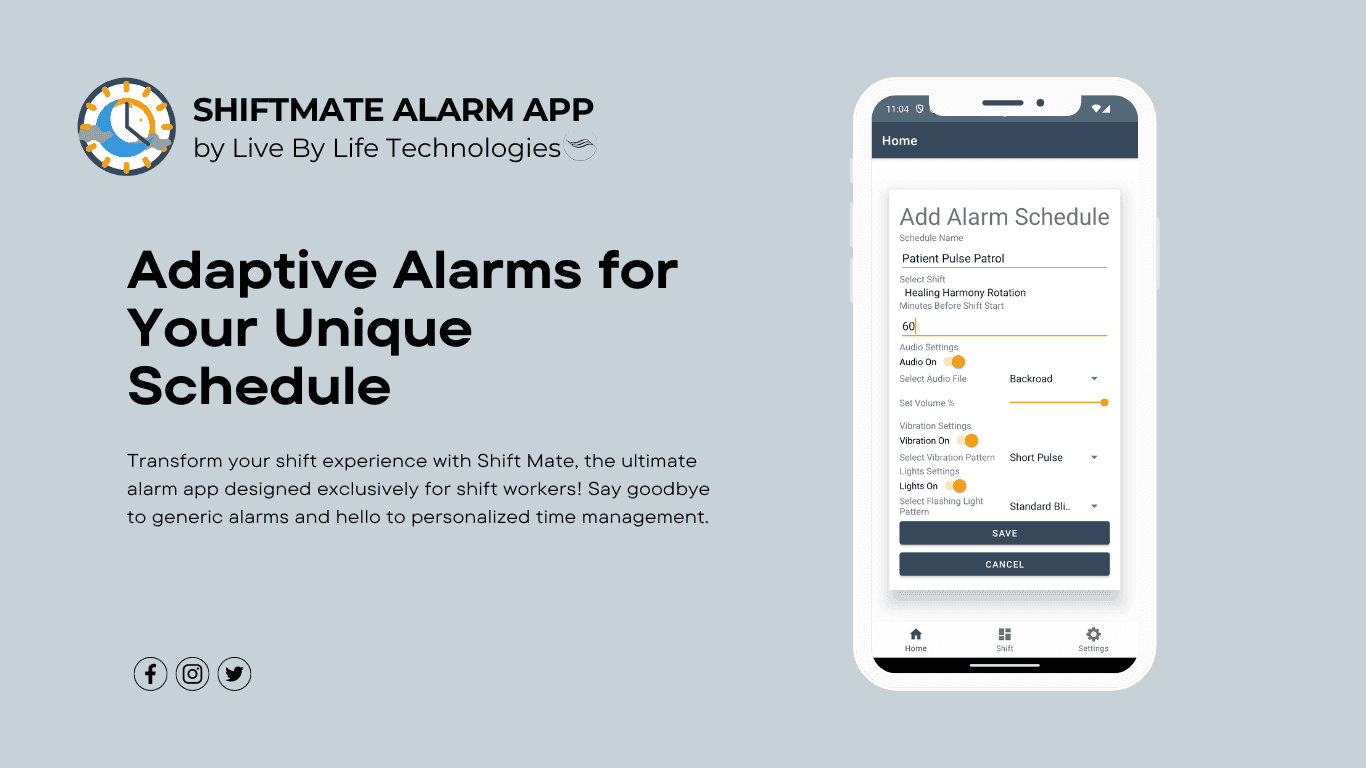
Rise and Shine: Crafting ShiftMate Alarm Scheduling App for Shift Workers
Rise and Shine: Crafting an Alarm Scheduling App for Shift Workers
Introduction
Embarking on the journey of developing an Android alarm scheduling application tailored for shift workers was a rewarding yet challenging experience. This article delves into the intricacies of the development process, highlighting the specific challenges faced, the decision-making behind technology choices, and the creative solutions employed to overcome obstacles.
Choosing the Right Framework: A Cross-Platform Exploration
The development journey commenced with a critical decision – the choice of the development framework. React Native and Flutter were initially explored, each offering unique advantages. The three key advantages considered for cross-platform frameworks over native development were:
Pros of Cross-Platform Frameworks:
- Code Reusability: Cross-platform frameworks enable developers to reuse a significant portion of their codebase across different platforms, reducing development time and effort.
- Faster Development Cycle: The ability to write code once and deploy it on multiple platforms accelerates the development cycle, allowing for quicker iterations and releases.
- Single Codebase: Maintaining a single codebase for both iOS and Android simplifies development and updates, streamlining the overall process.
Cons of Cross-Platform Frameworks:
- Performance Limitations: Cross-platform frameworks may not offer the same level of performance as native development, especially for resource-intensive tasks.
- Learning Curve: Developers may face a steeper learning curve, as they need to grasp the framework's intricacies and potential limitations.
- Platform-Specific Features: Implementing certain platform-specific features may be challenging or limited due to the abstraction provided by cross-platform frameworks.
Algorithmic Challenges: Cracking the Code for Reliable Alarm Scheduling
The heart of the app lay in its ability to schedule alarms reliably, a task that proved to be more intricate than anticipated. The algorithmic solution involved the application of a mathematical formula using modulus, ensuring precise timing for waking up users in time for their shifts.
Mathematics over Conditional Statements:
Good code often relies on mathematical principles rather than conditional statements to achieve clarity, efficiency, and reliability. In the context of alarm scheduling, the modulus operator played a pivotal role.
Understanding the Modulus Operator:
The modulus operator (% in most programming languages) returns the remainder of a division operation. In alarm scheduling, it helps in calculating the time difference between the current time and the scheduled alarm time. By using modulus, the algorithm ensures that alarms are triggered at the right intervals, regardless of the time elapsed since the last alarm.
Broadcast Receiver Setup: Navigating the Learning Curve
Setting up the broadcast receiver, a crucial element for handling various events such as device boot, exact alarms, and notifications, presented a learning curve.
Broadcast Receiver Overview:
A broadcast receiver is an Android component that allows the system or other apps to deliver events to the app in the background. It's a key part of event-driven programming on the Android platform.
Creating a Custom Broadcast Receiver:
Creating a custom broadcast receiver involves defining a new class that extends the BroadcastReceiver class and overriding its onReceive method. Below is a simple example demonstrating how one might create a broadcast receiver for handling alarms:
public class AlarmReceiver extends BroadcastReceiver { @Override public void onReceive(Context context, Intent intent) { // Handle alarm-related actions, such as displaying notifications or triggering sounds. // Access intent extras to get specific information about the event. } }
In the app's manifest file, the receiver is registered with an intent filter specifying the events it should respond to.
Database Management with Room: A Familiar Framework
Rooms, an integral part of the Android Jetpack library, was employed for efficient database management.
Understanding Room and Entities:
Room is a persistence library that provides an abstraction layer over SQLite to allow for more robust database access while harnessing the full power of SQLite. Entities in Room represent tables in the database.
Sample Code for Room Database and Entity:
@Entity(tableName = "alarms") public class AlarmEntity { @PrimaryKey(autoGenerate = true) public int id; @ColumnInfo(name = "alarm_time") public long alarmTime; // Additional fields as needed // Constructors, getters, setters, etc. } @Dao public interface AlarmDao { @Query("SELECT * FROM alarms") List<AlarmEntity> getAllAlarms(); @Insert void insert(AlarmEntity alarm); // Additional queries and operations } @Database(entities = {AlarmEntity.class}, version = 1) public abstract class AppDatabase extends RoomDatabase { public abstract AlarmDao alarmDao(); }
Conclusion: A Symphony of Innovation and Learning
In conclusion, the journey of building an alarm scheduling app for shift workers was a symphony of innovation and learning. Navigating the crossroads of development frameworks, optimizing algorithms for reliability, crafting custom solutions, and mastering broadcast receiver intricacies all contributed to the successful realization of a tailored and effective Android application. As the app takes its place in the Google Play Store, it stands as a testament to the resilience and creativity required in the dynamic field of mobile app development.